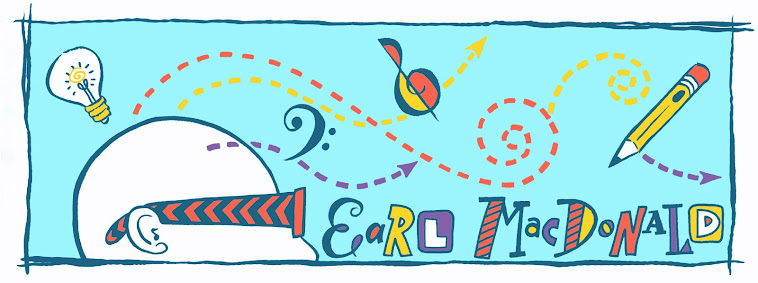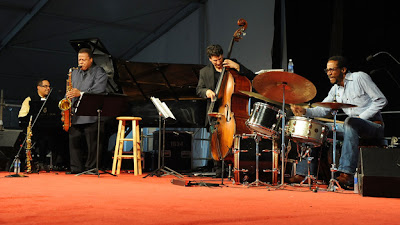My 10-piece band, the Hartford Jazz Society's New Directions Ensemble performed a concert at the University of Massachusetts on January 29th, 2013 and it was recorded by New England Public Radio. I thought it was one of our better performances, so I am happy to share it with you here.
Here is the roster which performed at UMASS's Bezanson Recital Hall:
Kris Allen - alto sax
Frank Kozyra - tenor sax
Lauren Sevian - bari sax
Jeff Holmes - lead trumpet
Doug Olsen - trumpet soloist
John Clark - French horn
Sara Javovino - trombone
Earl MacDonald - piano, composer, arranger
Henry Lugo - string bass
Ben Bilello - drums
Because it is an hour and a half concert, which includes my blabbing between tunes, you might want to scroll around to find a specific piece. Here are the starting times:
2:09 - Woody n' You
10:30 - Mirror of the Mind
15:24 - Miles Apart
21:10 - Appointment In Ghana
30:06 - Character Defect
- intermission -
40:22 - Sordid Sort of Fellow
50:05 - Hit The Road Jack
57:46 - East of the Sun
1:06:33 - Blame It On My Youth
1:13:03 - Hot 'n Ready
1:21:09 - Joshua
The next performance of the Hartford Jazz Society's New Directions Ensemble is slated for Friday, April 26th at the Polish National Home in Hartford, CT. The Newington High School Jazz Ensemble, directed by Stephen Brookes will be the opening act. A student workshop is scheduled from 4:30-6pm and is open to the public. The concert begins at 7 p.m.
New charts are in the works and the band sounds better every time we play. Purchase your tickets through the Hartford Jazz Society or at the door. See you there!
Here is the roster which performed at UMASS's Bezanson Recital Hall:
Kris Allen - alto sax
Frank Kozyra - tenor sax
Lauren Sevian - bari sax
Jeff Holmes - lead trumpet
Doug Olsen - trumpet soloist
John Clark - French horn
Sara Javovino - trombone
Earl MacDonald - piano, composer, arranger
Henry Lugo - string bass
Ben Bilello - drums
Because it is an hour and a half concert, which includes my blabbing between tunes, you might want to scroll around to find a specific piece. Here are the starting times:
2:09 - Woody n' You
10:30 - Mirror of the Mind
15:24 - Miles Apart
21:10 - Appointment In Ghana
 |
| Lauren Sevian, bari sax |
- intermission -
40:22 - Sordid Sort of Fellow
50:05 - Hit The Road Jack
57:46 - East of the Sun
1:06:33 - Blame It On My Youth
1:13:03 - Hot 'n Ready
1:21:09 - Joshua
The next performance of the Hartford Jazz Society's New Directions Ensemble is slated for Friday, April 26th at the Polish National Home in Hartford, CT. The Newington High School Jazz Ensemble, directed by Stephen Brookes will be the opening act. A student workshop is scheduled from 4:30-6pm and is open to the public. The concert begins at 7 p.m.
New charts are in the works and the band sounds better every time we play. Purchase your tickets through the Hartford Jazz Society or at the door. See you there!







